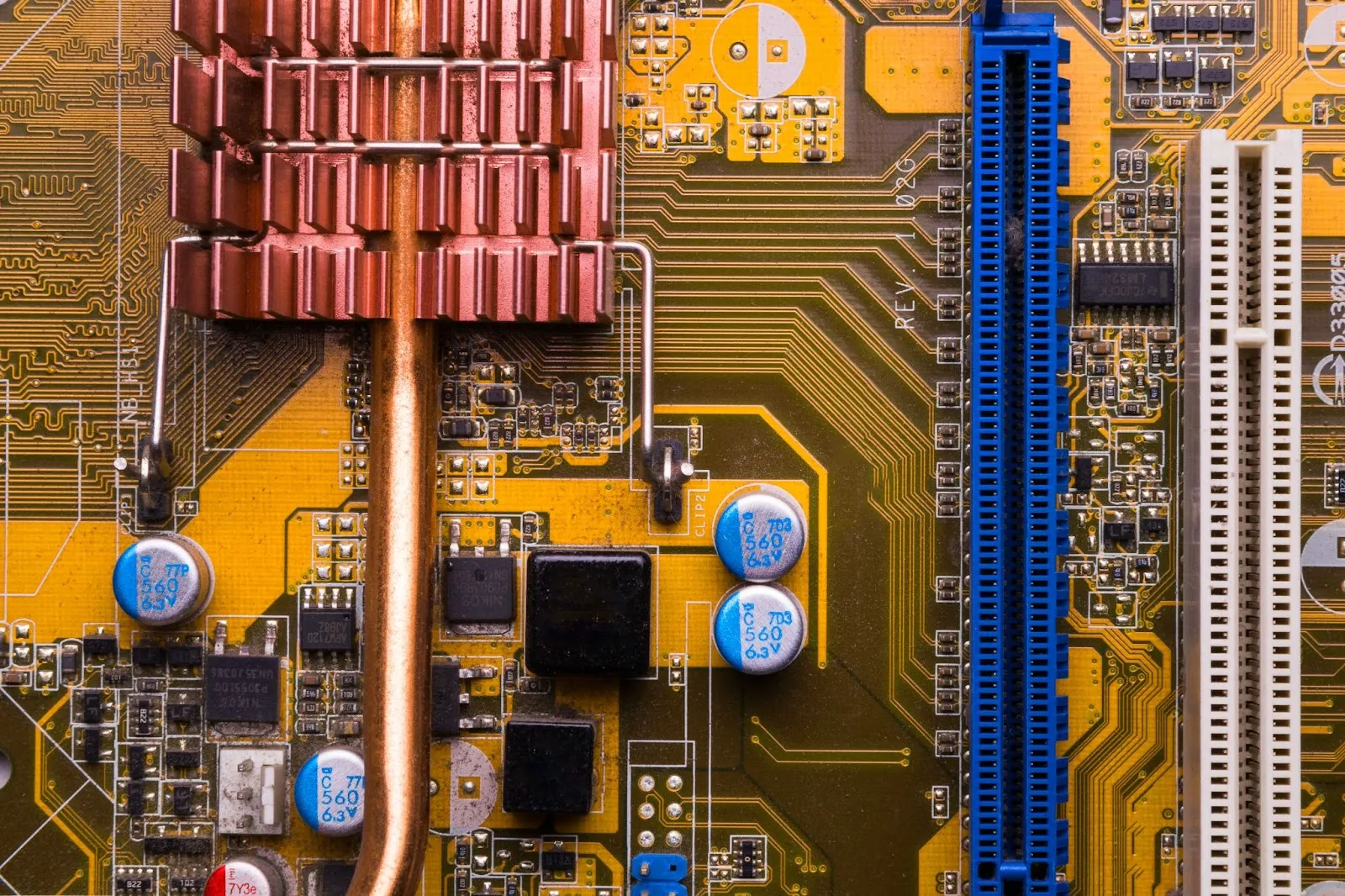5 Emerging Trends Shaping Electronics Reliability Testing for Unmatched Performance
As technology rapidly evolves, electronics become increasingly important in healthcare, aviation, and consumer products. With this growth comes the crucial need for thorough electronics reliability testing. This testing ensures that electronic devices function correctly and can endure the tough conditions they face in real-world situations.
As we neared the end of 2024, new trends are changing how we conduct reliability testing. These trends help manufacturers create more dependable and efficient products.
In this blog, we will explore five key trends that are set to transform how we assess and ensure the reliability of electronic devices.

Understanding PCBs and Miniaturization in Electronics
A PCB (Printed Circuit Board) is a flat piece of metal that joins and supports other electronic components like chips, resistors, and capacitors. It is used as the foundation of many devices and provides the means for interaction between these components.
Miniaturization is the process of reducing the size of electronic components while increasing their power and performance. This process enables devices to be made slim and lightweight. It is important for current devices like smartphones, tablets, and wearables.
The PCB manufacturing process is changing as electronic devices get smaller and more powerful. The new, smaller components are more complex and fragile, so we need advanced techniques to produce these boards. Because the parts are so tiny, even small mistakes during production can cause big problems in how the device works.
Key Considerations in Modern PCB Manufacturing
- Material Innovations: Advanced materials like high-performance polymers and composites are improving PCBs. These materials help them last longer and work better. They also improve thermal stability and resistance to environmental conditions. This is important for the reliability of smaller devices.
- Thermal Management: As components get smaller, managing heat becomes a big challenge. Thermal management is now a key part of PCB design. Manufacturers use thermal interface materials (TIMs) and heat dissipation methods to prevent overheating. Thermal management extends the life of components and improves device performance.
- Advanced Testing Methods: Traditional testing methods are being supplemented with new methods. These methods are Automated Optical Inspection (AOI), X-ray, and thermography. They do a good job of checking the condition of a PCB and can detect even minor damage that may affect its reliability.
- Simulation and Modeling: Computer-aided design tools help simulate printed circuit boards’ electrical and thermal performance. This helps identify potential problems and allows designers to make changes before production. This reduces the chances of defects and improves the product’s reliability.
- Environmental Testing: PCBs are used in many industries, like automotive, medical, and consumer electronics. Therefore, reliability testing must consider different conditions. Testing for humidity, temperature changes, and mechanical stress helps us see how PCBs perform in real-life situations.

AI-Powered Testing for Predictive Maintenance
Artificial Intelligence (AI) is changing how manufacturers test electronics. It gives them a fresh perspective on product assessment. AI can spot potential failures in electronic systems before they happen, helping prevent downtime and making systems more reliable.
By analyzing test data, AI identifies patterns and detects issues. It can even predict when a specific part might need replacement. This approach boosts the dependability of electronic equipment and systems.
How AI Enhances Predictive Maintenance
- Data Collection and Analysis: AI systems gather data from sensors in electronic devices. This data includes performance indicators and user behavior. The information goes into AI algorithms, which look for patterns and changes humans might miss.
- Early Detection of Issues: AI can spot early signs of failure before they happen. This allows manufacturers to take action before problems get worse. As a result, they can lower repair costs and reduce downtime.
- Optimizing Maintenance Schedules: AI can plan equipment maintenance based on its condition instead of sticking to set time frames. This predictive approach means maintenance happens only when needed, optimizing resources and cutting costs.
- Improving Product Design: Analyzing data with AI can provide tips for improving product design. This information helps manufacturers make future electronic products stronger and more reliable.
- Real-Time Monitoring: AI makes it easy to monitor electronic systems. This feature gives manufacturers real-time updates on system performance, which they can use to make necessary adjustments. Real-time data helps manage how products operate and their effectiveness.
- Industry Applications: This is particularly important in industries that suffer losses resulting from downtime. These are manufacturing, aerospace, healthcare, and telecommunications industries. For instance, an unexpected machine failure in the manufacturing process will lead to a halt in production. AI minimizes these risks by offering information that can be employed to maintain and replace the same.
Environmental Stress Testing for Extreme Conditions
As electronics are used in extreme temperatures, humidity, and pressure, environmental stress testing is becoming more important. Electronics reliability testing ensures that devices will work well in these conditions. These tests mimic the real situations that products face, whether flying at high altitudes or being used underwater.
Emerging trends in reliability testing include more advanced stress tests than traditional methods. These tests focus on the specific issues faced by modern electronics. Today’s testing aims to determine how well a product can handle heat, moisture, shock, and vibration. This way, manufacturers can ensure that their products perform as expected.
Increased Focus on Cybersecurity Testing for IoT Devices
The rise of Internet of Things (IoT) devices has brought a new challenge for testing electronics: cybersecurity. The fact of the matter is that every device that is connected to a network is at risk of being attacked by a cyber threat. Currently, it is necessary to look for weaknesses and threats that can be applied to attack IoT devices and create problems.
The future of electronics testing in 2024 will be to integrate cybersecurity features into the design of the electronics. Cybersecurity tests should be part of the overall reliability testing of electronic products. This way, we can make sure the devices are both reliable and safe from threats.
Sustainability and Eco-Friendly Testing Methods
It is becoming more important in the development, manufacturing and even the testing of electronics because of the global sustainability issue. Most companies are employing green technology in the manufacturing of printed circuit boards (PCBs). New testing methods are being developed to ensure that these products are as good as the conventional electronics products.
As more organizations adopt eco-friendly practices, reliability testing is changing too. It now includes green materials and processes that help cut down on waste and energy use. Testing is also evolving to assess sustainable electronics under the same tough conditions that non-sustainable ones face. This shift towards green technology is transforming electronics reliability testing as companies work to balance high performance with environmental concerns.
Final Thoughts
The five trends listed above: miniaturization of PCB manufacturing, AI in testing, EST, cybersecurity for IoT, and green testing will revolutionize the electronic product testing for performance and reliability.
This is why manufacturers have to be aware of these trends in order to design products that will suit the market. Since the electronics has been improving, the methods that are used to assess the reliability of the electronics must also be improved.
The trends in electronics testing for 2024 are relevant and timely to assist devices in addressing the requirements of the present.

Ben Chilwell
Proin eget tortor risus. Curabitur aliquet quam id dui posuere blandit. Vivamus suscipit tortor eget felis porttitor volutpat.

Ben Chilwell
Proin eget tortor risus. Curabitur aliquet quam id dui posuere blandit. Vivamus suscipit tortor eget felis porttitor volutpat.
Newsletter
Social Media
Tech stack team
Related Posts

Why Wearable Technology Demands Rigorous Reliability Testing for Unmatched Performance and User Trust

Integrating Environmental Testing for Enhanced Product Reliability in 2024



